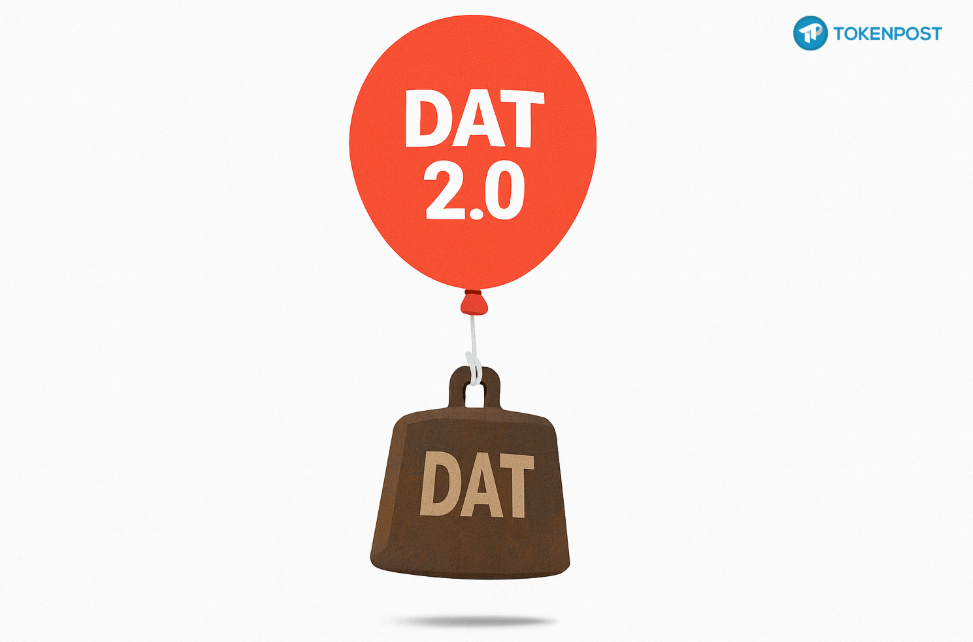The Digital Asset Treasury (DAT) was once the corporate world’s gateway to crypto glory. By placing Bitcoin on their balance sheets, firms hoped to project modernity, innovation—even courage. That illusion is now collapsing.
When BitMine’s Tom Lee declared this week that the DAT bubble had burst, he was not wrong. Several companies holding cryptocurrencies are now worth less than the assets they own. But the real story isn’t the implosion—it’s the evolution.
For a few years, the market rewarded exposure over execution. Firms didn’t need to build in Web3; it was enough to buy into it. A corporate treasury stuffed with Bitcoin or Ether became a substitute for vision. As TokenPost has long argued, the problem wasn’t the premise—it was the passivity.
Consider MicroStrategy, the poster child of DAT euphoria. When it began its Bitcoin binge in 2020, the firm’s share price traded at triple its net asset value. Today, even with Bitcoin up, that premium has shrunk to barely 1.4 times. The faith that “holding equals innovation” has eroded, and so has the multiple.
This is less a collapse than a correction. The market has begun distinguishing between possession and participation. The first generation of DATs were vaults—static, symbolic, and mostly speculative. The next generation will be programmable—treasuries that earn yield, interact with protocols, and move capital across chains.
In that light, Lee’s “burst bubble” looks more like the end of one operating system and the birth of another. His $10,000 forecast for Ethereum might sound like hopium, but if global treasuries are indeed migrating on-chain, it may prove conservative. Ethereum’s infrastructure already underpins tokenized funds, stablecoins, and enterprise contracts. It is not a meme; it’s the middleware of modern finance.
The lesson of the DAT cycle is clear: assets don’t innovate—architectures do. The corporate rush to “go digital” through Bitcoin accumulation has revealed itself as little more than balance-sheet theater. But as the froth subsides, something sturdier is emerging: treasuries governed by code, not by hype.
The tourists have left. The engineers remain. And as the second wave of DATs—call it DAT 2.0—takes flight, the weight of the old model still hangs beneath it, rusted but instructive. The future of corporate crypto will not be measured in coins held, but in networks built.
























Comment 0